Inevitably, some people pack the same looks for Miami.
Remember NADA’s legendary pool parties at the Deauville? There always seemed to be at least two art-bros who showed up in the same “statement” bathing suit from American Apparel. But it’s usually more awkward when gallerists inadvertently dress their booths too similarly.
Below, we take a look at accidental twinsies and judge who wore it better:
Mathew v.s. Sandy Brown
Mathew and Sandy Brown, two Berlin-based galleries, sent back-lit panels of cut metal to their booths in Art Basel’s Positions section and NADA, respectively. At Mathew, the neon-illuminated panels by Villa Design Group form a sort of maze that recall stained-glass windows. Rather than a canon of saints, the panels depict notorious gay serial killers, from Jeffrey Dahmer to Andrew Cunanan, who murdered Gianni Versace a few blocks south of the convention center in front of his South Beach mansion. Ilja Karilampi’s work at Sandy Brown uses LEDs instead and features cleaner-cuts as well as engravings. These seem to reference corporate logos, slogans, and a post-net graphic sensibility.
Verdict: Mathew Slays the Competition
Villa Design Group’s work at Mathew is so weird it’s unforgettable. The claustrophobic space is equally seductive and intimidating—like a cruising zone where danger lurks around the corner. Neon is just sexier than LEDs. Karilampi’s work was unfortunately hung with half the pieces on an interior wall and half of the pieces on an exterior wall—with no relation to one another. If they were intended to be viewed as singular “paintings” they might have worked better with some breathing room on the wall. Mostly, though, I couldn’t help but think how dated these will look in a few years.
TSA Philadelphia v.s. Target
Both corporate dealer of plastic crap Target and art collective Tiger Strikes Asteroid facilitated exhibitions this year—Target sponsored Pulse and TSA organized the Artist-Run show at Satellite. Both entities also flexed their branding muscles with installations featuring a jumble of white ceramics spilling out of containers. Target’s installation featured an augmented reality app that “explained” to viewers that all the white Target products represented spilled milk knocked over by mischievous CGI cats. The TSA Philadelphia room cleverly featured a series of artist-packed carry-on bags, including a piece by Ricky Yanas that comprises white ceramics in a suitcase that broke during shipping. Another suitcase from Ezra Masch concealed a projector displaying images of mystery sculptures as they appeared to actual TSA agents’ x-ray machines en route to Miami, and a third contained solely a T-shirt reading “Bomb” by Todd Baldwin.
Verdict: TSA Philly Packed Wisely, Target Wiped-Out
Let’s not even get into the taste level of a box store promotion in an art fair… Target’s whole concept made no sense beyond alerting visitors to the fact that they sell white dishes. TSA Philly’s show was smart—touching on anxieties relating to the shipment of goods and people that accompany the mass migration of art and artists to Miami each year. It’s also better branding—TSA of course shares its acronym with the Transportation Security Agency, whose prying eyes who scan our baggage. Target’s attempt to brand with digital art just felt desperate.
JTT v.s. Gallery Poulsen
New-York-based JTT sent this larger-than life postcard oil painting by Glen Fogel to NADA, while Belgium’s Gallery Poulsen hung a similarly-scaled page of notebook paper from William Powhida. Fogel’s painting recreates a personal note on the back of a Mickey Mouse postcard, part of which reads “I haven’t had an even semi-philosophical conversation since I left.” Meanwhile, Powhida’s letter rants rather philosophically about the art world, the market, and criticism in a series of platitudes.
Verdict: I’m a JTT Fangirl
We love William Powhida, but even the smartest self-referential work about art fairs in art fairs gets tiresome after a few days in Miami. Fogel’s postcard, on the other hand, still feels appropriate to its context while remaining endearingly intimate, even at a large scale. The casual/meticulous style that details of the original are reproduced in is just great.
Supportico Lopez v.s. James Fuentes:
This is a tough call. Both gallerists opted to semi-enclose their booths with painted room dividers with art-historical references. Both are pretty great. Charlie Billingham’s puking Marie-Antoinette-like ladies remind me of Genieve Figgis’s painterly depictions of old-timey people behaving badly, which we saw and loved at NADA in the Spring. They also remind us that decadence has consequences—always an appropriate caveat for Basel week. Meanwhile, John McAllister’s room divider at James Fuentes channels a fuchsia, Mattisse-like interior tableau. True to form, AFC appreciates both hot pink and bodily functions.
Verdict: There’s Room Enough for Both
As booth rental rates keep rising, maybe room dividers are a logical step for galleries to double-up in fairs! There’s room enough in town for two of these—a clever way to show collector-friendly paintings without eating-up precious wall space.
Swamp of Sagittarius v.s. Vector Gallery
Both Art Basel Miami Beach and The Satellite Show featured occult chill-out zones designed by different artist collaborations. Both mashed-up pentagrams, digital prints alluding to spirituality and mainstream consumerism alike, and created enclosed social spaces in otherwise cavernous contexts. At Basel, Swamp of Sagittarius, from Naomi Fisher and Agatha Wara featured digitally-printed curtains with RFID chips, scenes of nature, and astrology charts. These screened-off private seating areas where participants could purchase a $40 astrological consultation and $20+ glasses of Ruinart champagne. At the Satellite Show, Vector Gallery (the Satanic art gallery Whitney Kimball profiled for AFC) transformed the backroom of a derelict pharmacy with their signature Mylar, neon, and bodega-sign-quality digital collages mashing up religious imagery, pop references, and various other authority figures. The pop-up was appropriately titled Satanic Suicide Hotline, by Vector founder JJ Brine.
Verdict: Hail Satan!
While both projects ambiguously critique the correlation between “enlightenment” and mainstream consumer culture, Satanic Suicide Hotline veers far into the realm of offending everyone equally while Swamp of Sagittarius felt like a sell-out. In Vector’s trippy room, one encounters signs compelling us to “Butcher White Americans for Art!” and “Kill Christ to Save Yourself.” Pictures of Charles Manson share wallspace with a version of National Geographic’s famous Sharbat Gula cover morphed to transform the Afghani refugee to an inhuman blob monster mandala. Another sign conflates Al Jazeera, Israel Experts, and the gay hookup app Grindr as authoritative media entities. Vector’s resident “oracle” Julia Maria Sinelnikova has burned a Torah, Bible, and even (today) a Koran. If there’s a message here, it’s that every construct—from organized religion and race to celebrity worship and murder—are equally terrible and indulgent. Why not bask in the awfulness of it all?
As an added bonus, SATELLITE hosted a pop-up bar at the pharmacy counter selling affordable “remedy”drinks with ingredients such as B12 or cough syrup alongside vodka. It was a far more accessible commodification of “wellness” culture and booze than Basel’s bar—and that was reflected in the diversity of those who attended SATELLITE’s event last night.


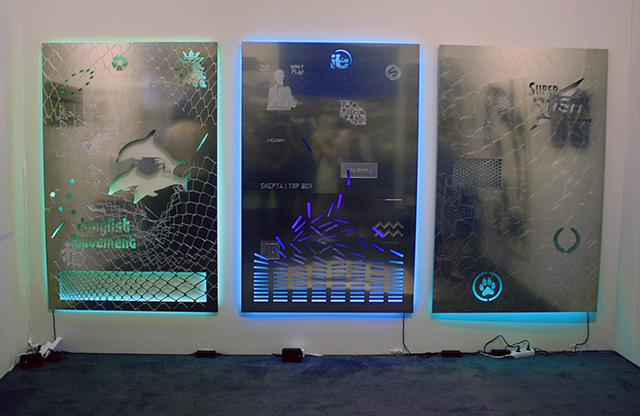
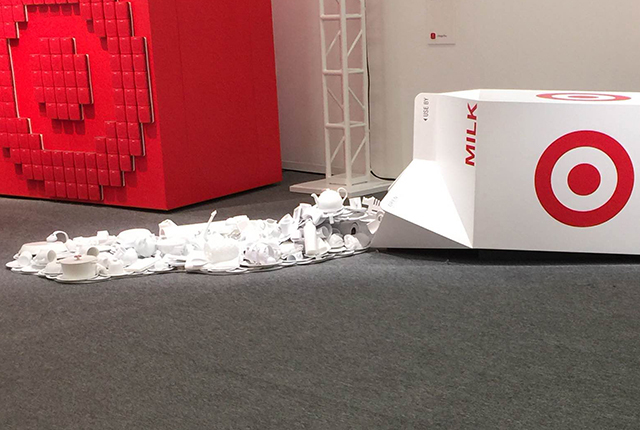

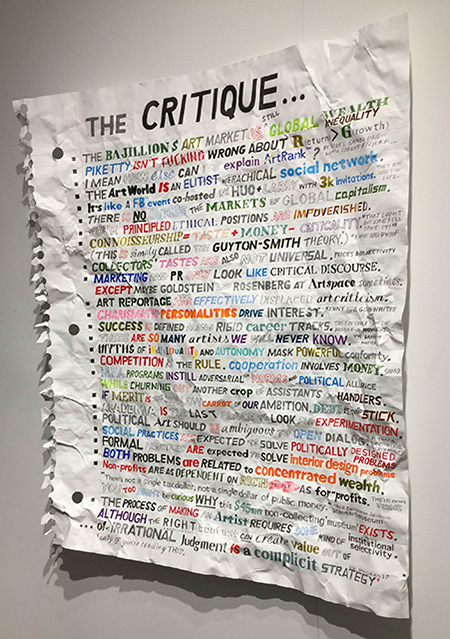
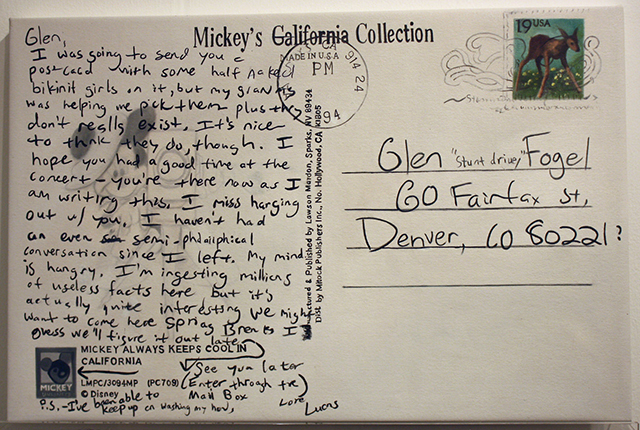

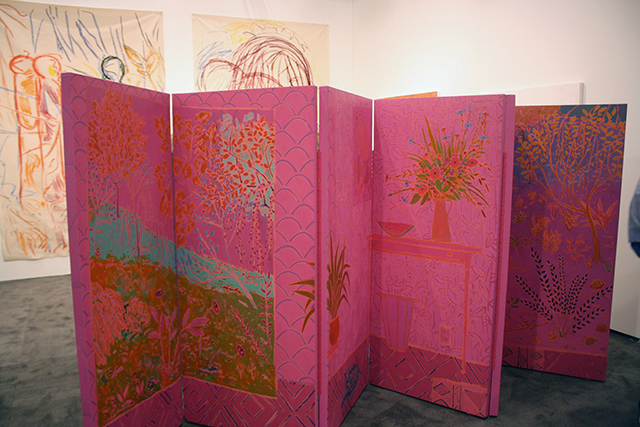
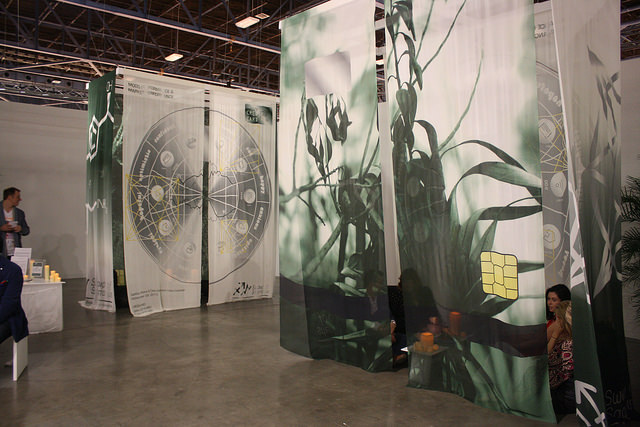

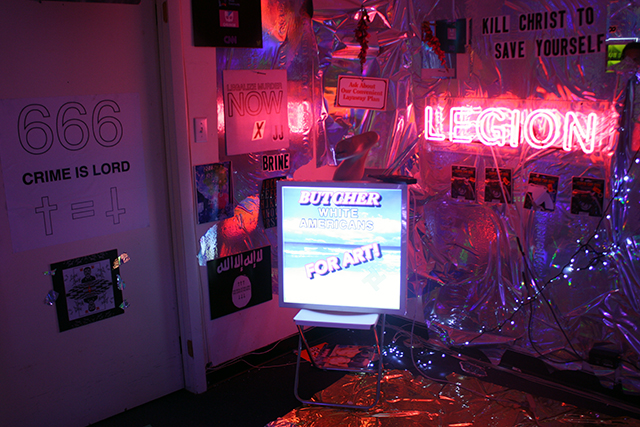
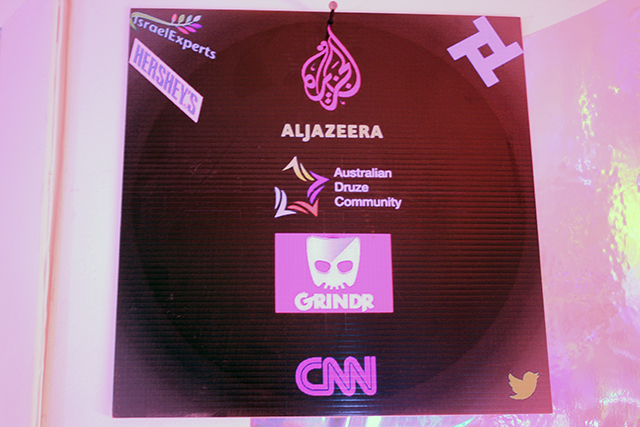

Comments on this entry are closed.
{ 1 trackback }